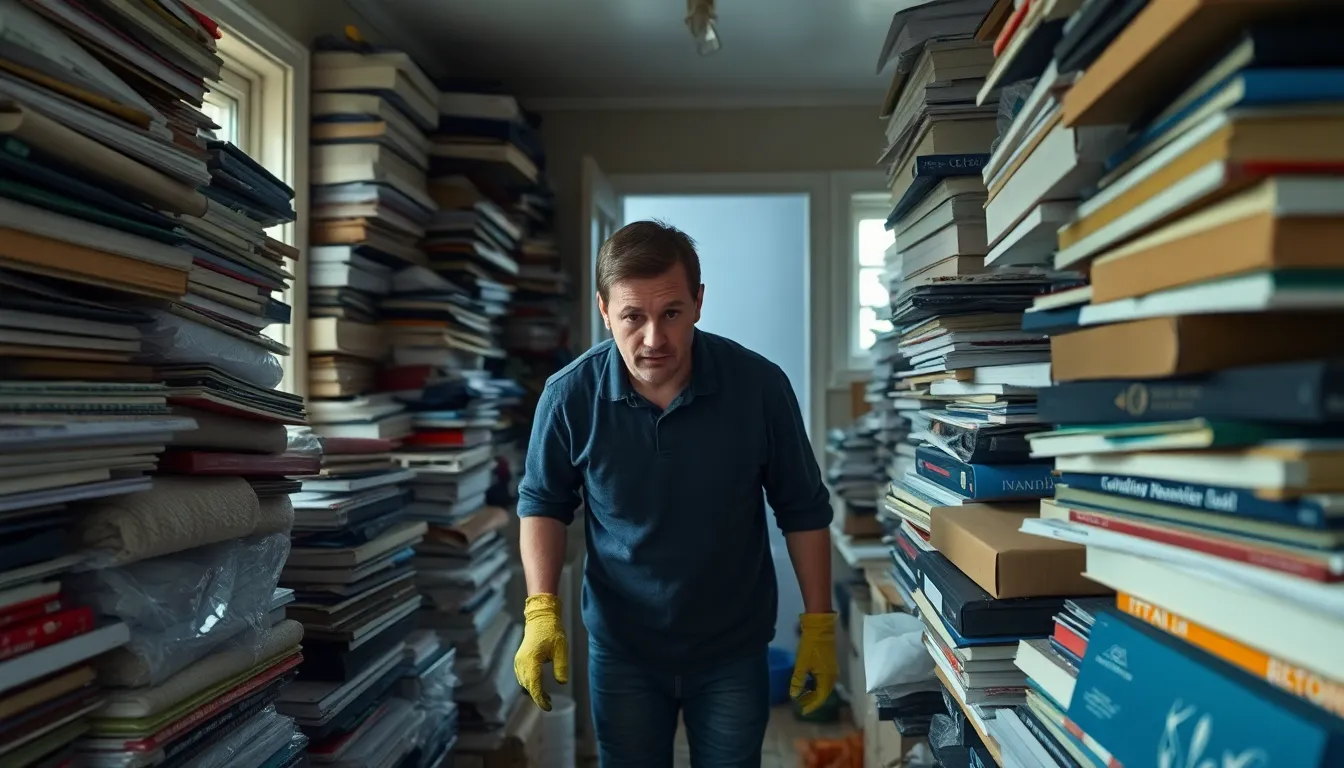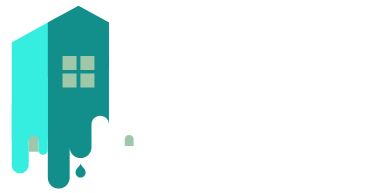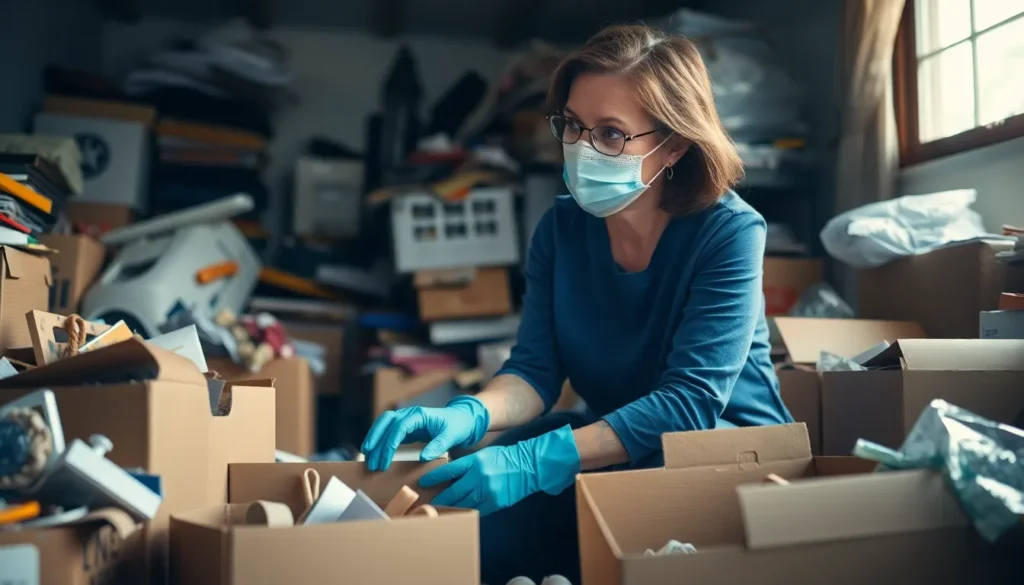Table of Contents
ToggleImagine stepping into a home that feels more like a treasure hunt gone wrong. Piles of newspapers tower like skyscrapers and forgotten treasures lurk in every corner. Hoarder house cleaning isn’t just about decluttering; it’s an adventure in rediscovery. With the right approach, it can transform chaos into calm, turning a daunting task into an exhilarating journey.
Understanding Hoarder Houses
Hoarder houses frequently present complex challenges during the cleaning process. Understanding the implications of hoarding behavior plays a crucial role in effectively addressing this issue.
Defining Hoarding Disorder
Hoarding disorder consists of persistent difficulty discarding or parting with possessions. Individuals with this disorder experience significant distress related to their collecting behaviors. This condition often results in clutter that disrupts living spaces, impeding one’s ability to use those areas for their intended purpose. The American Psychiatric Association classifies hoarding as its own mental disorder, emphasizing its complexity and the need for professional intervention in severe cases.
The Psychological Impact of Hoarding
The psychological effects of hoarding can be profound and far-reaching. Many individuals exhibit anxiety when faced with the idea of discarding items, viewing every possession as essential. Social isolation frequently occurs, as embarrassment about living conditions prevents them from inviting others into their homes. Their emotional well-being may suffer, leading to feelings of shame and inadequacy. Understanding these factors is vital for creating a compassionate approach to hoarder house cleaning and support.
Challenges of Hoarder House Cleaning

Cleaning a hoarder house involves significant obstacles. These challenges often require time, patience, and understanding.
Physical Barriers to Cleaning
Physical barriers frequently complicate the cleaning process. Piles of belongings create narrow pathways, hindering movement through affected areas. Items stacked high may obscure windows and doors, limiting light and accessibility. Additionally, structural damage from neglect presents safety risks for cleaners. Tools and equipment often remain buried among stacks, making retrieval difficult. Addressing these physical barriers builds a foundation for a successful cleanout. Clearing obstructions first establishes safer and easier access to cluttered spaces.
Emotional Resistance and Attachment
Emotional resistance significantly impacts the cleaning process. Many individuals experience strong attachments to their possessions, viewing them as extensions of themselves or as memories. Denial or fear of loss can prevent them from discarding items, impeding progress. Anxiety may arise during the sorting process, making it challenging to let go. Trust becomes essential in these situations for individuals feeling overwhelmed. A supportive environment facilitates conversations and encourages them to confront their attachments. Building rapport promotes cooperation, leading to a more effective cleaning experience.
Effective Strategies for Hoarder House Cleaning
Effective strategies transform the daunting task of cleaning a hoarder house into a manageable process. With a structured approach, individuals can tackle clutter and reclaim their spaces.
Creating a Cleaning Plan
A solid cleaning plan serves as the foundation for success. Start by setting clear goals, such as specific areas to clean each day. Break down the process into smaller tasks to prevent feeling overwhelmed. Schedule designated cleaning sessions, allocating sufficient time for breaks. Involve the individual affected by hoarding, encouraging them to voice concerns and preferences. Establishing a supportive environment enhances cooperation and builds trust, making cleanup efforts more effective.
Steps for Sorting and Decluttering
Systematic sorting leads to effective decluttering. Begin by categorizing items, such as keep, donate, recycle, and discard. Assign dedicated boxes or bags for each category. When handling sentimental objects, engage in open conversation about attachments, facilitating decisions. Tackle small areas first, gradually moving to larger spaces. Utilize a timer to create focus, encouraging swift decision-making. Completing one area fosters momentum and motivates continued progress, ultimately leading to a more organized and functional living space.
Professional Help for Hoarder House Cleaning
Hiring professionals for hoarder house cleaning can significantly ease the burden. Expertise in this area provides an organized approach, essential for navigating the emotional and physical aspects of the task.
When to Consider Hiring Experts
Identifying when to seek help can streamline the decluttering process. If the clutter creates unsafe living conditions, immediate professional intervention is critical. Professional assistance becomes necessary when emotional attachment leads to distress during the cleaning process. Individuals who feel overwhelmed by the sheer volume of items may benefit from an expert’s perspective. Recognizing that time constraints might hinder progress can also warrant hiring specialists. Finally, seeking help can offer emotional support and promote a healthier environment.
What to Expect from Professional Services
Professional services typically start with a comprehensive assessment of the space. Expect a compassionate team that respects individual belongings and emotional connections. They may provide a detailed cleaning plan that outlines specific tasks and timelines. Assistance often includes sorting, organizing, and disposing of items in an ethical manner. Additionally, professionals come equipped with specialized tools and techniques to tackle difficult situations. Following the cleaning, providers may offer ongoing support to maintain an orderly environment.
Cleaning a hoarder house is more than just a task; it’s a journey towards healing and rediscovery. With the right mindset and strategies, individuals can transform clutter into clarity. Recognizing the emotional and psychological complexities involved is essential for a compassionate approach.
Whether tackling the challenge alone or seeking professional help, the focus should always be on creating a supportive environment. By fostering trust and understanding, it’s possible to navigate the obstacles of hoarding. Ultimately, the goal is to achieve a safe and functional living space that promotes well-being and peace of mind.







